-
A Sacred Place Where Phoenixes Alight
Hagaji Temple was founded in 716 by Gyoki (668–749), a prominent monk from Nara, by order of Empress Gensho (683–748). It is located at the foot of Mt. Haga, not far from where lacquered chopstick factories are lined up along Obama Bay. The main hall stands at the top of a stone staircase amidst towering trees, and the temple grounds often serve as a playground for local children.
According to legend, Hagaji Temple was built on a sacred site where a phoenix once appeared, leaving brilliant feathers behind on the earth. For this reason, it was given the formal name of Hoshusan (“phoenix temple”). With cherry blossoms in spring, hydrangeas in early summer, and brightly colored leaves in autumn, the approach leading to the main hall is picturesque in all seasons, and many people visit to enjoy the scenery.
Before entering the main hall, be sure to ring the bell in the tower on your left. In this way you can announce your arrival and pay your respects to the deities at the same time. Give the wooden beam that serves as a clapper a powerful swing, and a deep sound will ring out over Mt. Haga. Note, however, that it is considered poor etiquette to ring the bell when you are leaving. -
-
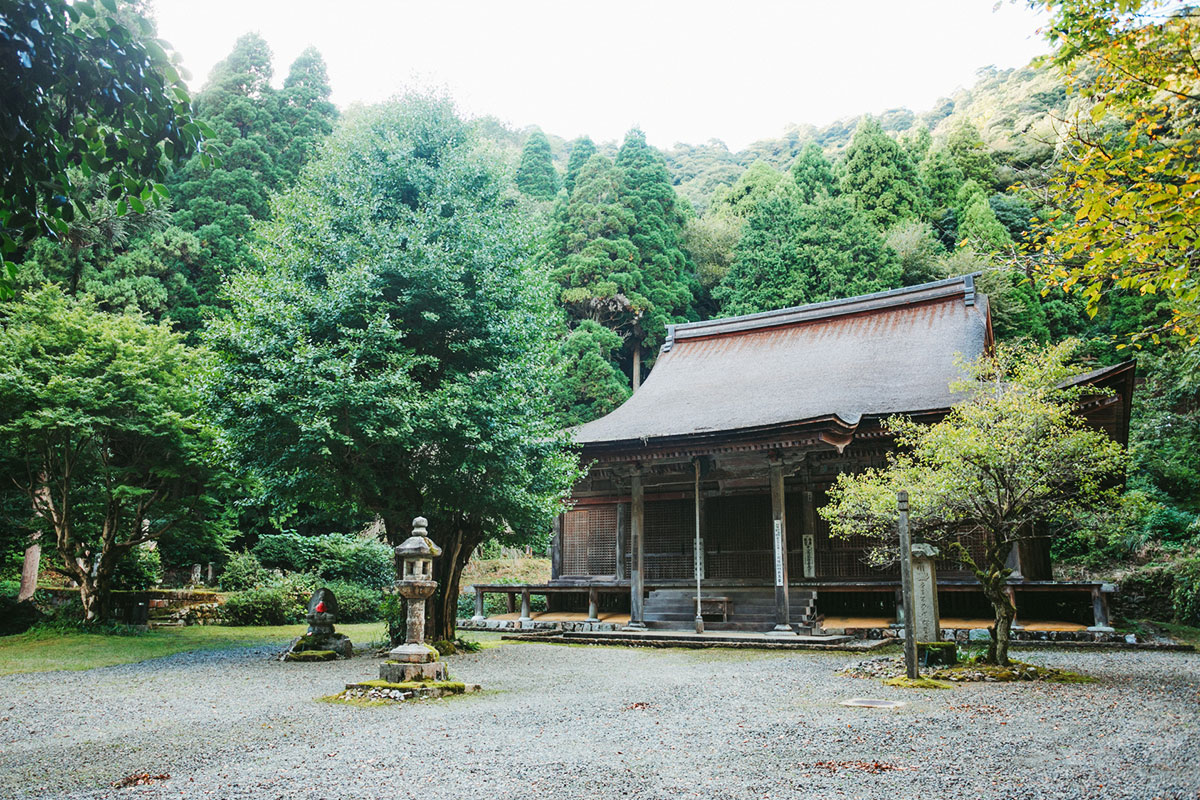 The main hall at the top of the stairs
The main hall at the top of the stairs -
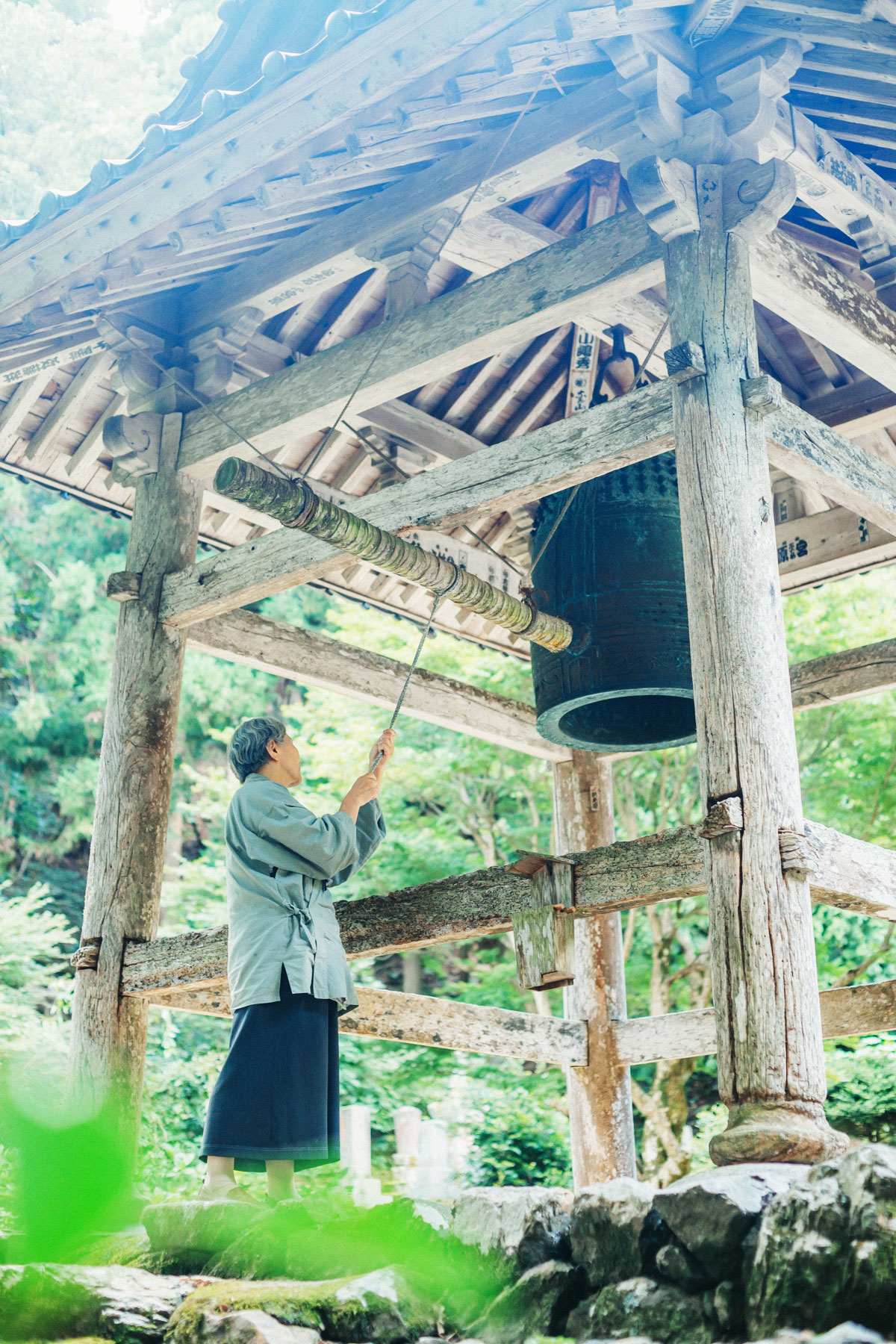 The tolling of the bell before viewing the temple
The tolling of the bell before viewing the temple
-
-
An Eleven-Headed Kannon Modeled After Empress Gensho
The principal object of worship at Hagaji is a statue of the Eleven-Headed Kannon (the bodhisattva of compassion). The statue retains a lustrous appearance, with well-preserved yellow color on the body and vermilion and green on the robe. It is said that its facial features were modeled after Empress Gensho herself. Note, however, that the empress reigned from 715 through 724, but this statue was carved after her death, in the early Heian period (794–1185). It is made of hinoki cypress and stands 1.46 meters tall. The fact that the statue is almost life-sized adds to the impression that a true empress has appeared before you.
The eleven smaller heads depicted on this statue of Kannon represent the eleven stages on the path to Enlightenment, and despite their size, the facial expressions are delicately rendered. You may also notice that the statue’s right arm, which is extended downwards, is unusually long. In Buddhist statuary, this symbolizes the desire to reach out and save as many people as possible.
The Eleven-Headed Kannon is flanked by two other statues. On the left is a statue of the Thousand-Armed Kannon, and on the right is a statue of Monju Bodhisattva (the bodhisattva of wisdom), both in standing positions. The thousand-armed form of Kannon emphasizes the bodhisattva’s ability to see and relieve suffering, and each of its hands holds various items to help and protect humanity. According to records, this particular statue was originally created as the principal object of worship for another temple and was moved to Hagaji at a later date. -
-
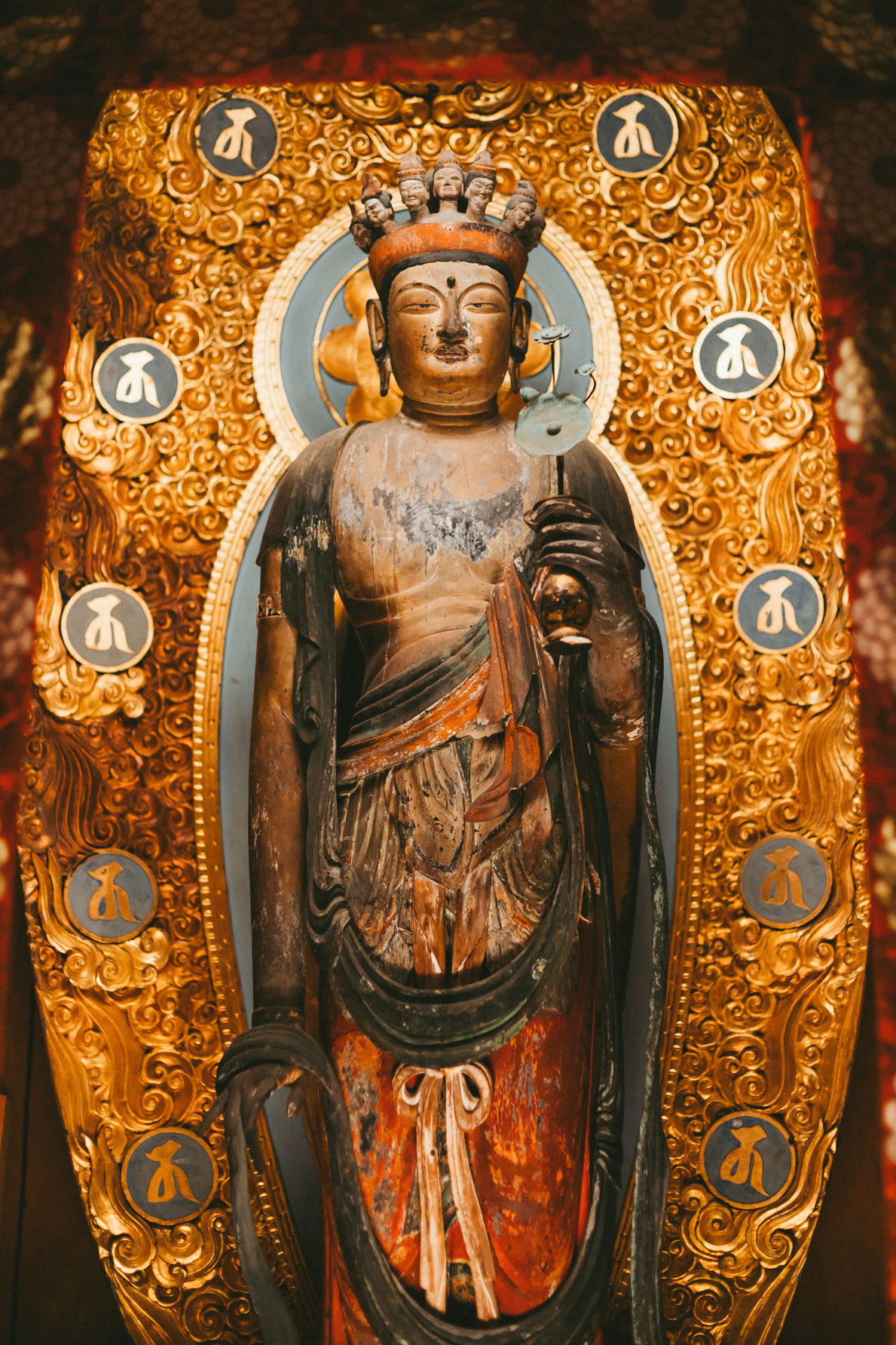 The magnificent eleven-faced Kannon (Avalokitesvara Bodhisattva)
The magnificent eleven-faced Kannon (Avalokitesvara Bodhisattva) -
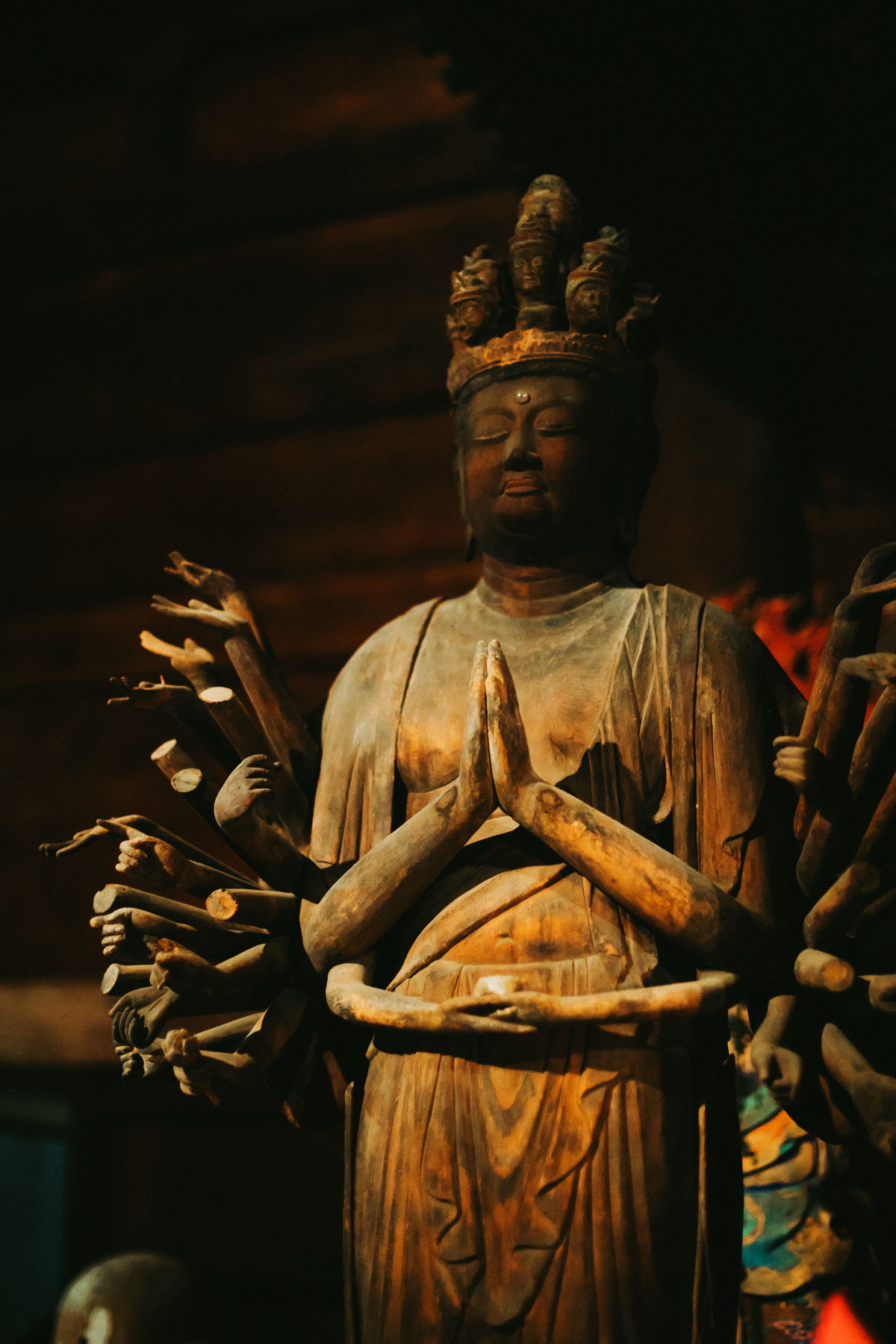 The main image of the thousand-armed Kannon (Avalokitesvara Bodhisattva) on the left
The main image of the thousand-armed Kannon (Avalokitesvara Bodhisattva) on the left
-
-
Musings on Hagaji Temple
Hagaji is managed by the chief abbot and his wife. Every day, the wife looks up at the sky in hopes that a mythical creature such as a phoenix or a dragon will appear once again. The clouds that drift over the temple seem to change shape at will, occasionally taking the form of a phoenix with great wings extended across the sky.
After contemplating the ancient statues in the main hall, be sure to look skyward once you step back out into the sunlight. Perhaps you too will catch sight of a phoenix in flight. -
-
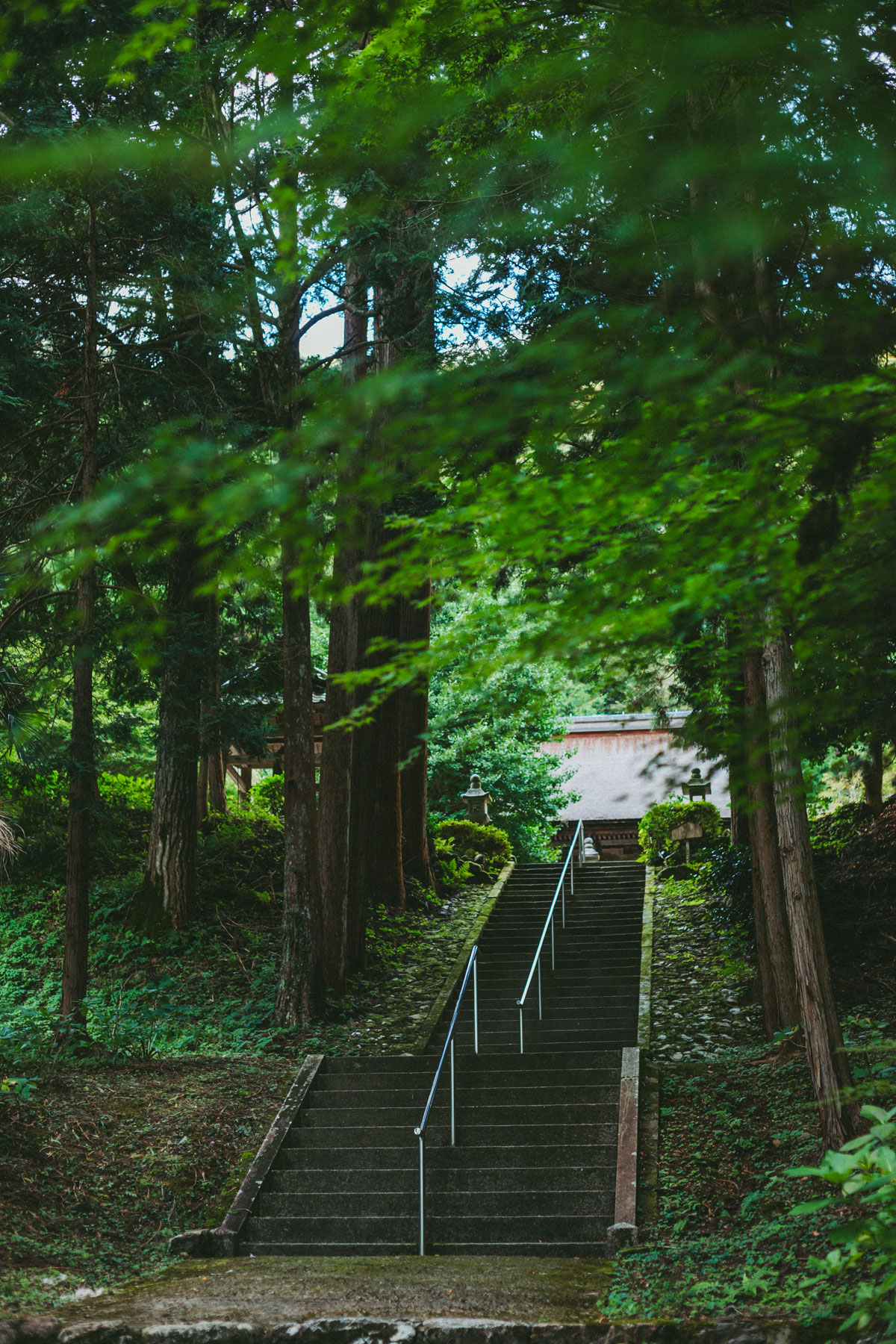 Open sky awaits at the end a tunnel made of trees at the head of the stairs
Open sky awaits at the end a tunnel made of trees at the head of the stairs
-
